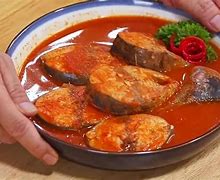
Hanabi Jepang Bulan Apa
What makes Japanese fireworks unique
Fireworks are manufactured and consumed all over the world, but they are not the same wherever you go. Every country has its own unique firework characteristics. Japanese fireworks are known for their exquisite delicacy and rich artistry. The following are the three main characteristics of Japanese fireworks.
Color changing chrysanthemum with four cores by Beniya Aoki Fireworks (Nagano)
Elaborate techniques are used to make this ultimate artistic Japanese firework, which features four cores—each of a different color. The hoshi in each core transform, with the four layers resulting in multiple transformations in an instant.
Exploded diameter and symmetry (bon and kata)
Every firework shell also has a different exploded diameter, depending on its number. If a firework explodes to the maximum expected diameter for its number, it is said to have a good bon, or “tray”. If the hoshi that are packed in the shell scatter radially at an equal distance in 360 degrees to create a perfect circle, the firework is said to have a good kata, or “shoulder”.
Lighting and disappearing timing (kiekuchi)
When fireworks explode, the hoshi that are packed inside light up. Ideally, they all light up in the same instant and all go dark at the same time as well. Fireworks that achieve this are said to have a clean kiekuchi, or “disappearing point”.
Japanese fireworks experts have been carefully studying and refining these three characteristics of Japanese fireworks for generations, and continue striving even today to take their skills and techniques to the next level.
Characteristics of Japanese fireworks (Taken from Introduction to Fireworks by the Japan Pyrotechnics Association, FY2017 edition)
Japanese fireworks, particularly its well-known bursting cored chrysanthemum fireworks, are said to be the most exquisite and beautiful in the world. Their three main characteristics are listed below.
Japanese firework shells have a spherical shape, while Western fireworks are typically cylindrical. Japan also packs its shells with spherical stars, versus cylindrical Western stars. These Japanese hoshi feature layers of differently colored explosives, much like Japan’s old-fashioned kawaridama candy balls that have rings of color inside.
As the figure on the right shows, a Japanese firework packs hoshi spherically into the shell (container) with a bursting charge (the explosive that breaks apart the firework) in the center. The outside of the shell is made from multiple layers of durable paper that are pasted on and then dried. Striking the perfect balance between the force of the blast charge and the way the paper is glued is what allows the firework to burst into a perfect sphere with evenly-scattered hoshi. If the paper is not glued evenly, the firework will not explode symmetrically, resulting in a distorted flowering.
Cylindrical fireworks do not scatter stars in all directions, so they are not perfectly spherical when they burst. Western fireworks also have different coloration than Japanese fireworks, and are known for unusual patterns such as those that burst multiple times in the air. The smaller fireworks are equal in terms of their brilliance, but when they exceed a No. 5 (15 cm) shell, the Japanese fireworks achieve significantly more exquisite and beautiful expressions.
Japanese fireworks experts have also been able to perfect the techniques to create two or three concentric cores (cored fireworks) through their skillful use of Japanese paper. The ability to achieve an extraordinary level of harmonious beauty, where the firework appears perfectly spherical from all angles, with excellent color transformation and a clean disappearing point, is attributed to Japan’s unique aesthetic and superior craftsmanship. They represent the crystallization (and indeed, they can be as perfect as crystals) of the wisdom and tireless effort of generations of firework artisans. In recent years, Japan’s pyrotechnicians have been challenging themselves to create four-core, or even five-core fireworks, proving that there is no limit to their artistic curiosity and achievements.
Source:http://www.hanabi-jpa.jp/data/booklet.html
What are Japanese Fireworks?
Fireworks are available all over the world, but Japan has become famous for its expertise, craftsmanship, and spectacular displays. There are also several types of fireworks that have become closely linked to Japan. These include:
Huge world-record holding fireworks which measure 1.2 metres and weigh hundreds of kilograms. As you might expect, the resulting explosion is a sight to see!
These fireworks take their name from the famous US waterfall and are essentially sparklers that cascade downwards from a bridge.
These mines burst into beautiful patterns in the sky, from traditional stars to more contemporary shapes like smiley faces, hearts and even Anime characters.
Top 10 Fireworks Festivals in JapanJapan loves festivals just as much as it loves fireworks. Festivals known as matsuri take place all over Japan for a wide range of reasons, from religious celebrations at shrines to honouring the dead, fertility, star crossed lovers - the list goes on and on. One of the common factors between all of these diverse festivals is that they are often fun, colourful, and bring together family, friends, and visitors. Japanese festivals have a carnival atmosphere, with food, music, games, and more, and represent a great way to experience the real Japan. Attendees even wear special clothing known as a ‘Yukata’ which is a casual summer kimono and ‘geta’ sandals. And of course, when it comes from getting from A to B in Japan, and from one festival location to another, there’s no better or more cost-effective way than the JR Pass. Of all Japan’s festivals, those involving fireworks might just be the most spectacular. Here is our list of recommendations: 1.) Sumidagawa Fireworks Festival, Tokyo
Japan’s world-renowned artistic fireworks
The famed shogun Tokugawa Ieyasu was the first person to ever witness a firework in Japan. Ever since then, the Mikawa area of Aichi Prefecture has been a thriving fireworks region. Today, many other regions across Japan—most notably Akita, Miyagi, Fukushima, Ibaraki, Niigata, Yamanashi, Nagano, Tokyo, Kanagawa, Shizuoka, Fukuoka, Oita, and Kagoshima—are backed by a long and rich history of firework-making traditions. Meanwhile, the origins of Japanese artistic fireworks for the common people are said to date back to the Ryogoku Kawabiraki Fireworks of 1733. The year before, famine and disease had spread throughout the country, and many people died. Tokugawa Yoshimune decided to hold a festival as a memorial to the souls of the departed and to pray for the eradication of disease. It was dedicated to the water gods and scheduled for the first day of the boating season, known as kawabiraki no hi. Eventually, a fireworks festival came to be held every year on kawabiraki no hi, a tradition that led to the modern-day Sumidagawa Fireworks Festival. The first fireworks expert to make a name for himself at the festival was Yahei Kagiya. Later, a fireworks expert called Ichibei Tamaya would branch off from the Kagiya family and make his mark in Edo. To this day, the Japanese call out “Tamaya!” and “Kagiya!” when they watch a fireworks show.
Mengisi form dan registrasi e-paspor
Jika e-paspor sudah dalam genggaman, langkah selanjutnya adalah melakukan registrasi untuk mendapatkan Bebas Visa Jepang. Anda bisa mengisi form yang disediakan oleh Kedutaan Besar Jepang dan registrasi dilakukan di Kantor Kedutaan Besar Jepang yang ada di Indonesia.
Color changing chrysanthemum with four cores by Sugano Fireworks (Fukushima)
This multilayered firework comes with two, three, four, or even five rings arranged inside its shell. The hoshi in each layer transform into two or three colors, resulting in a gorgeous bloom that produces between six and twelve colors in a brief two seconds before fading forever into the night sky. Japanese artistic fireworks--the envy of the world—don’t get much better than this.
Fireworks photograph:Kiminari Onozato
Fireworks are more than a spectacular light show in Japan. The art of Hanabi dates back centuries and today, firework festivals are a major attraction. Table of contens:
Intro A Brief History of Japanese Fireworks What are Japanese Fireworks? Top 10 Fireworks Festivals in Japan Bonus Tips IntroFireworks are big in Japan, and have a long, colourful history going back to the Edo Period. Today, they have become synonymous with both summer festivals and New Year celebrations. In fact, they are so popular they have inspired festivals of their own, as well as spectacular competitions between Japanese fireworks experts, each trying to create a bigger and better display than the last. When you visit Japan, why not celebrate the trip of a lifetime with a visit to a fireworks festival? We’ll run through 10 of the best from across Japan below, and tell you how to get there with your Japan Rail Pass. In Japan, fireworks are more than just a light show, they’re an art form known as ‘hanabi’ which literally translates as ‘flower fire’. They are not just for creating dazzling displays, but as we will go on to explain, they have a deeper significance relating to Japan’s heartfelt appreciation for ephemeral beauty. A Brief History of Japanese FireworksAs mentioned, the word ‘hanabi’ in Japanese means ‘flower fire’ - a very apt and beautiful description for fireworks, which hints at their cultural significance in Japan. Hanabi first became popular during the Edo period as a symbol and celebration of spiritual beauty. They have also been historically used to ward off evil spirits, and in the modern era have become synonymous celebrations, from summer festivals and major sporting & music events, through to bringing in the New Year.
Kaleidoscope with rising sliver trunk and blinking core by Isogai Fireworks (Aichi)
A silver trunk of light rises in the night sky as this firework is launched, bursting into bloom just as it reaches its highest point. From its sparkling center shoot eight huge petals in eight colors, as beautiful as a kaleidoscope.



